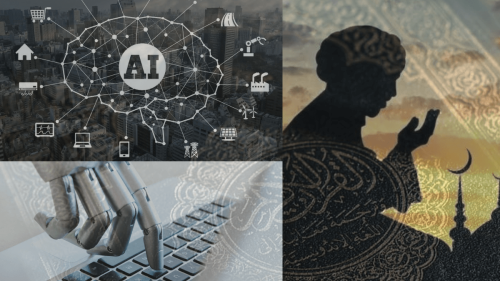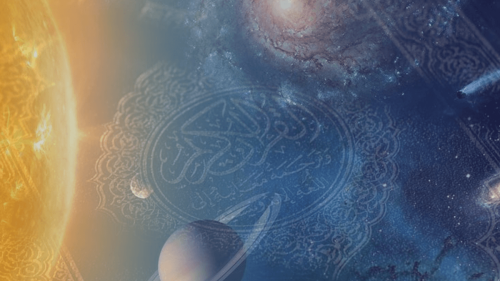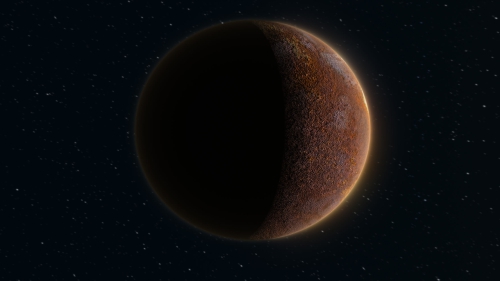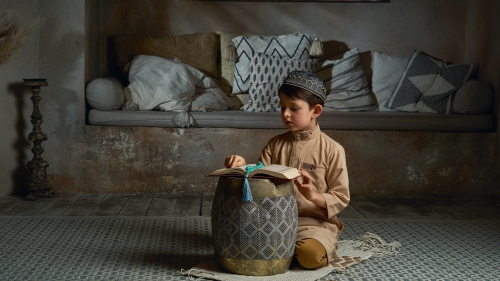Unique Ways to Inspire Muslim American Youth

The focus of the Institute for Medieval and Post Medieval Studies (IMPMS), since its inception, has been to introduce the Muslim scholars of the Yester centuries to the world. The IMPMS has conducted seminars, workshops, and published articles for this purpose during its 20 years of existence.
Muslim Civilization Driven by Inventions
No one has described the accomplishments of the Muslim scholars of the past as eloquently as Carly Fiorina, the former CEO of Hewlett Packard: "There was once a civilization that was the greatest in the world. It created a continental super-state that stretched from ocean to ocean and from northern climes to tropics and deserts. Within its dominion lived hundreds of millions of people of different creeds and ethnic origins. One of its languages became the universal language of most of the world, the bridge between the peoples of a hundred lands. Its armies consisted of people of many nationalities, and its military protection allowed a degree of peace and prosperity never known. The reach of this civilization's commerce extended from Latin America to China, and everywhere in between." Fiorina so elegantly continues her remarks:
"And this civilization was driven more than anything by the invention. The architects designed buildings that defied gravity, and mathematicians created the algebra and algorithms that would enable the building of computers and encryption. Its doctors examined the human body and found new cures for disease. Its astronomers looked into the heavens, named the stars, and paved the way for space travel and exploration. While modern Western civilization shares many of these traits, the civilization I am talking about was the Islamic world from the year 800 to 1500, which included the Ottoman Empire and the courts of Baghdad, Damascus, and Cairo."
I have asked several graduate students about Carly Fiorina's quote related to the significant advances Muslim scientists and scholars had made during the medieval centuries. None of the students had any knowledge about the Muslim scientist of the medieval era and their contributions to world civilization. I was not surprised as I did not know Muslim scientists of medieval centuries during my college years. It was not until 30 years ago when I came across a few articles about Muslim scientists and their extraordinary contributions in philosophy, math, science, and technology. Both the educated Muslims and non-Muslims have very little knowledge about the Muslim scientists of the medieval years. It makes one wonder why there is so much ignorance about such an important subject?
Reasons for Decline of Islam's "Golden Age"
As a Muslim, I am embarrassed to say that in the last 500 years, Muslims have not done much scientific innovative work or published many scientific papers of much significance. Muslims did not even make an effort to preserve the treasures the Muslim scholars of the past left behind. Most probably, we must have lost 60% of their valuable work in every field of science and technology. People preserved their books translated from Arabic to Latin and other languages under Latinized names. Many European and American historians started writing about Muslim scholars' scientific contributions in the medieval era in the 19th and 20th centuries. Most probably, a small percentage of original Arabic books were available in libraries of Muslim countries covered with dust as nobody was reading or even familiar with them. One wonders why the Muslim civilization that reached such heights became extinguished, and Muslims' contributions to science and technology reached its lowest level? What happened to the "Golden Age" of Islam?
There are multiple reasons for the decline and demise of such a great civilization, chief among them are:
1. There were criticism and discouragement to study the rational knowledge of philosophy and science and promote exclusive studies of revealed knowledge by the Asharite school of thought and well-respected great scholar Imam Ghazali.
2. It resulted in conversion and or closure of the teaching and research institutions of science and technology to the teaching of theology. By the 11th century, the most influential Nizamia school banned science from the schools and replaced them with religious subjects, exclusively teaching the Quran, Ahadeeth, and Sharia. Rulers destroyed any research labs and observatories, and Muslim fanatics assassinated scholars.
3. In the 13th century, the brutal Chenghiz Khan destroyed the most important universities and great libraries which housed scientific work and massacred many scholars.
4. Caliphs and kings were afraid of the rise of educated in science and philosophy.
5. Muslims gradually lost their superiority in science and technology and became backward, while Europe emerged out of darkness and made scientific advances in leaps and bounds.
6. For five centuries, from 16th to now, Muslims have not produced significant scientific or technological innovation and have not published many papers. Even the Muslim scientists of the 20th century who have received Nobel Prizes have studied or did their research work in American or European universities.
7. Starting in the 17th century, the Europeans with advanced technological knowledge turned all Muslim countries into their colonies. Even the most influential Muslim empires of the Ottoman, Mughal, and Safavid could not stop their advances.
Negative Effects of Colonialism
During the 200 years of colonialism, the Europeans reintroduced, though to a limited extent, the subjects of sciences in separate secular schools. They eradicated the scientific progress Muslims had made during the 7th-15 century from the pages of history, creating a false impression that all scientific progress came from the renaissance. For example, the students learned that Newton's 17th-century study of light and lenses and prisms forms the foundation of the modern science of optics. In fact, in the 11th century, Ibn Al-Haytham determined virtually everything that Newton wrote about optics. Ibn Al-Haytham was the first scientist who postulated that light rays correctly from the object to the eye and perceived in the brain. He confirmed his theories by experimentations; that is why he is called the first scientist. They taught that mathematician Francois Vieta discovered algebra. Al-Khwarizmi introduced the concept of algebra. They took the credit for reviving science and geography during the 15th to 17th centuries. Muslim geographers Al-Masoodi, Al-Biruni, and Ibn Batuta, to name a few, produced untold volumes of books on geography describing many parts of the world between the 8th and 15th centuries.1
Due to persistent negligence of the contributions made by Muslim scholars in various fields of knowledge, the new Muslim generation never knew the great Muslim scholars. They developed a sense of inferiority as they assumed that Western scholars are the preceptors of all scientific knowledge. It made the Muslim world incapable of serious thinking, research, analytical work, and creative thinking. As a result of this Muslim world has been enslaved by the West.2
It was after the 2nd world war that Muslim countries started gaining independence. Following independence, some Muslim nations discovered rich natural resources but did not have the expertise to mine and use them for their development and remained subservient to their former colonial masters. Despite all their wealth, they failed to promote science and technology and remained backward and dependent on the West. The Muslim mind remains frozen in 10th century Asharites school, believing that ritualistic Islam will be their salvation in eternal life.
How Awareness Is Being Created Among Muslim Youth?
Many articles and books describing in detail the Golden Age of Islam are available now. History will make Muslims aware of Islamic heritage, but that alone is not enough to inspire the young generation of Muslims to pursue studies in science and technology. Muslims are not familiar with present Muslim scholars who are making great strides in science and technology. A great majority of Muslims have a misunderstanding that Islam opposes studies of science and philosophy.
To create awareness in this area, we can significantly impact it if we commence with the Muslim youth. To make high school students familiar with internationally known Muslim scientists of the 20th and 21st centuries, IMPMS organized an essay competition.
In this effort, IMPMS partners with Discover STEM and STEM Matters, two unique and leading institutions in the Dallas-Fort Worth area that are training students to become innovators and inventors in the fields of science and technology. Students of these two organizations have already accumulated dozens of patents under their belt for their innovations and inventions.3, 4
The recent essay contest is about contemporary Muslim scientists. The organizers provided names of some of the most prominent Muslim scientists of the recent past and current centuries to the contestants, who were requested to write two separate articles about two different scholars. More than the biographies of the scientists, we were interested in how the subjects of their articles impacted each contestant. We wanted to know whether following reading and writing about these scholars were the contestants motivated and inspired enough to follow in their footsteps?
The students chose to write an article on one of the 3 Muslim Noble Laureates in science: Dr. Abdus Salam, Dr. Ahmed Zewail, and Dr.Aziz Sancar, and another article on the following leading Muslim scientists in the 21st century. Maryam Mirzakhani, Nergis Mavalvala , Mutlu Pakdil, Mahmut Gazi Yasargil, Dr. Moncef Mohamed Slaoui, and Dr. Rana Dajani
Essays About Great Contemporary Muslim Scientists and Educators
Following are the summaries of some of the articles written by the young students.
Faiza (last names withheld to protect the students' privacy) chose Abdus Salam as the subject of one of her articles. She writes about the past achievements of Abdus Salaam, who was born in the year 1926 in Jhang, a small town in Pakistan. After completing his studies in his native land, Abdus Salaam attended Cambridge, where he earned a Ph.D. in theoretical physics.
Abdus Salam, continues Faiza, "is a devout Muslim whose faith did not reside in a separate compartment of his life; it inextricably connected to his work and family." Faiza further comments that "he gave back to his community, which is something I hope to do in the future."
Another young student who wrote about Abdus Salam was Yaseen. He indicates that Salam's teacher and mentor wanted him to become an English teacher. Still, Salam did not agree with that and continued his concentration in mathematics, a field in which he earned the highest awards. Later, he got a Ph.D. in theoretical physics from Cambridge. His area of concentration was research in the physics of elementary particles. A brilliant student and educator, Salam was destined to achieve fame and recognition for his work. In 1979, as the first Muslim ever, he was awarded the coveted Nobel prize for his "Electroweak Unification Theory."
Yaseen concludes his article by stating that "Abdus Salam has inspired me to be a physicist because of his work on his theory (the Electroweak Unification Theory) and how he found evidence to back up his theory; by using mathematics."
Hamza, another contestant, concludes his article by stating that "25 years after his death, Abdus Salam is still remembered and continues to inspire people. He demonstrated that anyone, even from a poor town in a third world country, can study and change the world as long as they are dedicated and passionate about their work."
Faiza's second essay's research subject was Dr. Rana Dajani, a professor of biology and biotechnology at Jordan's Hashemite University. She received her biology and molecular biology degrees from the University of London and the University of Jordan. She also got her Ph.D. from the University of Iowa. The focus of her research is diabetes and cancer genome-wide interaction studies along with stem cells. Additionally, she promotes and motivates women to enter the field of science as they are significantly underrepresented. She has made the list of the "World's 100 Most Powerful Arab Women." Dajani is the founder and director of the nonprofit organization 'We Love Reading,' for which she got the Library of Congress literary award.
Inspired by Dajani, she states: "In many ways, beginning with her status as a Muslim hijabi who has educated herself for many years and has also educated others with the education she has received. She is also known for giving back to society by researching diseases and attempting to support others affected by the disease."
Another contestant that was impressed and inspired by Dajani was Yossef. Not only her dedication to sciences and research to cure diseases have motivated Yossef, her NGO (We Love Reading), a phenomenal success in itself, has opened thousands of libraries in 60 countries enabling tens of thousands of children to read. It is this commitment to give back to society what Yossef admires about her.
Yaseen starts his paper by quoting Prophet Muhammad PBUH: "For him who follows a path for seeking knowledge, Allah will ease for him the path to Paradise." His subject of the investigation was the Nobel laureate, Dr. Ahmed Zewail. Famous as the father of "femtochemistry," Dr. Zewail was born in Egypt on February 26, 1946. He received his Bachelor's and Masters's degrees in chemistry from the University of Alexandria in 1967 and 1969. For his doctorate, Zewail attended the University of Pennsylvania and received his Ph.D. In one of his autobiographies, he has stated: "Arriving in the United States, I had the feeling of being thrown into an ocean. The ocean was full of knowledge, culture, and opportunities, and the choice was clear: I could either learn to swim or sink."
Following his graduation in 1974, he had a research position at the California Institute of Technology, where two years later, he got a teaching position. In Caltech, he continued his research on Femtochemistry, which is studying the movement and behavior of atoms in chemical reactions. His peers recognized his research, and he was named the father of Femtochemistry, a body of work which in 1999 won him a Nobel prize. He was the first Egyptian to win such a prize.
Burcin Mutlu Pakdil was the subject of Muniq's essay. Dr. Pakdil, known as "the galaxy hunter," discovered a new galaxy in our universe: a double-ringed elliptical galaxy named after her. Pakdil attended school in an exceedingly small town in Turkey, where a small number of people had an education beyond elementary school. It wasn't proper for a hijabi to leave home and study in a distant town like her. Despite facing a lot of criticism, she traveled to Ankara to start her college education at Bilkent University, one of the most respected in the world. "On the very first day of school, a male professor asked her," Are you crazy? You are a woman, and you left your hometown to study physics?" Small town hijabi girls were not supposed to attend college, mainly out of town. But Pakdil was determined to follow her passion and do just that -- study physics! She completed her Bachelor's in physics in 2009, followed by earning her Masters' degree from Texas Tech in 2012. This hijabi small-town girl was too ambitious to stop at that. In 2017, she earned a Ph.D. in astrophysics from the University of Minnesota.
Her accomplishments and awards are too many to list here. But it is worth mentioning that CNN, Science Daily, Astronomy Magazine, Independent, and NPR news featured her discoveries.
"Running through my confused state of mind, I used to think 'Aim for the stars,' an unceasing cliché! But while I was researching Dr. Burcin Mutlu Pakdil, I realized that she faced criticism from a very young age. Her life was full of a lot of hardships and obstacles along her road to success, and she made up her mind to break through all the stereotypes and fulfill her aspirations."
Moniq continues: "She is an inspiration to me and many others across the globe as well. Looking beyond the horizon is something that Mutlu Pakdil did. She thought out of the box and fueled her burning passion. She had faith in Allah, and that was her biggest weapon to victory. Dr. Burcin has made me realize that I don't need to blend in with different people's ways to achieve greater feats. I should instead stand out; stand out as a Muslim woman. Wearing a hijab and my identity as a Muslim working woman should become my strength. She has inspired me that if I have my aspirations set in mind and I'm on the correct direction towards my path to success, then the sky's the limit. No matter what the society or anyone for that matter criticizes her, a woman should always either learn from it or discard it, if she knows that she is following the correct path set by Allah."
Noor, another young essay contestant, writes about Maryam Mirzakhani, born on May 3, 1977, in Tehran, Iran. She was an Iranian mathematician who became the first woman and the first Iranian to win a Field Medal. It was equivalent to a Nobel prize in mathematics. There is no Nobel prize for this entire field for her outstanding contributions to the dynamic and geometry of Riemann surfaces and their moduli spaces. As a child in Iran, she thrived in mathematics and was awarded several gold medals in mathematics. The International Mathematical Olympiad award followed them in 1994, and gold medals in the International Olympiad in Toronto in 1995. She earned a Ph.D. from Harvard for her dissertation titled: Simple Geodesics on Hyperbolic Surfaces and Volume of the Moduli Space Curves. Between 2004 and 2008, she served as a Clay Mathematics Institute research fellow and an assistant professor at Stanford University, wherein in 2008, she received a full professorship position. Mirzakhani's work on Riemann surfaces and moduli spaces bridges several mathematical disciplines: hyperbolic geometry, complex analysis, topology, and dynamics, and influences them all in return. Mirzakhani was thankful to Allah that despite all the difficulties in her life, she never failed to thank Allah for all her accomplishments.
Noor got inspired by Mirzakhani and added: "[she] taught me that when our grievances and problems overtake us, we must ask Allah for help. That is not to say that we only turn to Allah when we are troubled; rather, we turn to Him when we are content too. A beautiful Ayah of the Quran tells us how we should act when difficulties afflict us: Those who when any affliction smites them, they say: Verily, we belong to Allah, and it is to Him that we surely return." (Baqarah 2:156). Mirzakhani has inspired Noor, because through all the trials and tribulations in her life she never gave up and pursued her goal. She has taught Noor "to have patience even in the darkest moments of our lives. She was an example for the younger generation prompting us to pursue our dreams no matter how big or crazy they are, as long as we keep in mind the rulings Allah has set for us."
Noor further quotes Mirzakhani: "I don't think that everyone should become a mathematician, but I do believe that many students don't give mathematics a real chance. I did poorly in math for a couple of years in middle school; I was just not interested in thinking about it. I can see that without being excited, mathematics can look pointless and cold. The beauty of mathematics only shows itself to more patient followers."
Alas, this genius of a mathematician, Maryam Mirzakhani, died young, on July 14, 2017, of breast cancer. Had she lived to a mature age, without a doubt, she would have continued her invaluable contributions to the field of mathematics, an area underrepresented by women.
Noor's second essay is about Ahmed Zewail. The son of a bicycle and motorcycle mechanic, Zewail was born in Alexandria, Egypt, on February 26, 1946. From such humble beginnings, he became the first Egyptian to win the Nobel prize in chemistry in 1999. He was the first scientist to discover that chemical reactions could be determined through ultrafast lasers and thus, coined the term femtochemistry. Before his discovery, because chemical reactions last only 10 to 100 femtoseconds (one femtosecond is 0.000000000000001 second), with the belief that it would be impossible to observe the events that constitute a reaction. But Zewail was able to see the motion of atoms and molecules utilizing an ultrafast laser technology capable of producing light flashes just tens of femtoseconds in duration. This discovery of Zewail's gave the scientists the capability to control the outcome of the chemical reactions and would lead to many applications.
Zewail never lost his connection with Allah. While in Egypt, he regularly attended the Al-Azhar mosque. His devotion to Allah continued after much fame. "He showed us that to be an extraordinarily successful person; one has to not only swim in the depths of knowledge but stay connected to Allah as well. Noor reflects on his own beliefs by stating: "I've learned that no matter how great you become or how much fame you attain, you should always be humble and submissive." Likewise, Ahmed Zewail, in one of his interviews, stated: "Some of the best minds in the world are religious people. So, the claim that to be a rational scientist, by definition, you must not believe in a religion is a bit naïve. It seems to me also that it is quite strongly dogmatic. Religion is vital for people for a variety of reasons, and I don't see a conflict between the two."
Noor shares his admiration of Zewail and adds: "Ahmed Zewail also inspires me of the fact that great accomplishments never come easy, one must come out of his comfort zone and one should never let failure stop him from achieving what he wants. The great Muslim scientist, Ahmed Zewail, taught me that in no way can one be successful without implementing the Quran and Sunnah in their life. Ahmed Zewail fought through all his problems and immersed himself in knowledge along with making it a priority to please Allah and Allah gave him success."
Our next essayist, Atkia, researched and wrote about Aziz Sancar. Born in Savur, Turkey, on September 8, 1946, Sancar lived in a farming region where he spent most of his time on manual labor. But his illiterate parents wanted him to get an excellent education to advance in life. While he excelled in both elementary and high schools, he wanted to become a professional soccer player. After realizing the volatile nature of professional sports, he decided to choose a stable career which led him to study medicine. While seeing patients, he realized that he was not interested in treating them as much as he wanted to examine them. With this realization and winning a scholarship, he traveled to America to study biochemistry at Johns Hopkins. But significant language barrier forced him to go back to Turkey after a brief stay in England to learn English.
After learning about Dr. Stan Rupert's discovery of DNA repair, a hero of his, he returned to America to work alongside him. Through experimentation, Sancar was able to clone a gene of the enzyme that repairs Ultraviolet light-damaged DNA., an accomplishment that gained him much recognition. He earned a Ph.D. in nucleotide excision repair, which is a process where DNA damaged by ultraviolet light gets removed with the help of the extraction mechanism inside the enzyme. For this monumental discovery, he and his partners Lindahl and Paul L. Modrich received the Nobel prize in chemistry in 2015.
Atkia is inspired not only by Sancar's scientific genius but his philanthropic contributions as well. The nonprofit Sancar Foundation promotes Turkish culture and provides support to Turkish students in the United States. Atkia believes that Sancar's work with his foundation got inspired by his struggles as an international student. Atkia continues: "His foundation serves as a first-class example of giving back to the community. His community work galvanizes me to try and do the same. There are many different avenues where I can follow Dr. Sancar's example and provide support for my community members. I have been especially encouraged to support younger students because of Dr. Sancar."
Mahmut Gazi Yasargil, another Turkish neurosurgery's Man of the Century, is the subject of Hamza's essay. Mahmut was born on July 6, 1925, in Lice, Turkey. His brother died of abdominal typhus during his childhood, a tragedy that inspired him to study medicine. In 1943 he moved to Germany to attend medical school at Friedrich Schiller University in Jena. He invented medical instruments and techniques that made possible surgeries on conditions that were inoperable before. He founded and developed micro techniques in surgery with which he treated patients with epilepsy and brain tumors. He was promoted to chairman of the Department of Neurosurgery and performed over 7500 surgeries. Following his retirement in 1993, he became a professor of neurosurgery at the University of Arkansas, where he still teaches.
Yasargil is one of the greatest neurosurgeons of the twentieth century. His surgical instruments and techniques are still in use today and play a significant role in modern surgery. He taught over 3,000 students, and millions of others got inspired by him.
Hamza, too, has been motivated by him as he notes: "Mahmut inspires me to innovate and invent products and tools that change the lives of millions of people just like Mahmut Gazi Yasagil."
Fardis wrote his paper about someone in the news, daily, last year, all over the nation. He is none other than Dr. Moncef Mohamed Slaoui. Raised in Casablanca, Dr. Slaoui was born in Agadir, Morocco, on July 22, 1959. He lost his father when he was a teenager, and his single mom raised him along with his four siblings. Slaoui joined the immunology profession after his sister's death through whooping cough, an immunizable disease. Before becoming head of Operation Warp in the White House, he was the head of the vaccine division at GlaxoSmithKline, a multinational pharmaceutical company based in London.
When announcing his appointment to head Operation Warp, a project to develop and deliver 300 million doses of a vaccine for the Coronavirus by January 2021, President Trump described Slaoui as "one of the most respected men in the world in the production and, really, on the formulation of the vaccine." Alex Azar, HHS Secretary, considered him "arguably the world's most experienced and successful vaccine developer."
Fardis is motivated by Slaoui and states: "He inspires me to want to do good and be committed to whatever cause, not for my own sake, but for the betterment of the entire community -- and I firmly believe that Allah will guide and clear the path. My greatest ambition in life is to become a scientist. Ever since I decided that I want to be a scientist, I studied harder, especially in all my science subjects." Fardis continues his statement: "I know I will be able to achieve my ambition as long as I put my heart and perseverance into it. If I am lucky enough to achieve my goals and ambition, I will share my fortune with all the kids who love science and become scientists. My future is still far, but I will make the most in the present to achieve my greatest ambition of becoming a scientist. I am hopeful that we will get through this, and we will overcome Covid-19. We cannot thank Dr. Slaoui enough for his time and dedication."
Fardis did his second essay on the Nobel laureate, Dr. Aziz Sancar. Inspired by this great scientist, he makes this observation: "As a Muslim, I am proud to be part of a heritage that has produced great scientists of today, including the likes of Dr. Sancar, Dr. Ugur Sahin, Dr. Ozlem Turci, etc., who selflessly are helping billions of people on this planet. They all have followed the fundamental commandment of Allah - Iqra -- continuous and passionate learning. While in high school and while there are no comparisons of these great people, and while my current contributions in my community seem meek, I want to make an effort to follow in their footsteps sincerely."
The above summaries and observations are cursory samples of some of the essays submitted for the contest. We, at the IMPMS, could not be more pleased with the outcome. IMPMS is probably one of the few organizations globally, making humble efforts to inspire the young Muslim generations to become scientists and innovators. Without paying attention and mastering science and technology, Muslims will continue to remain subordinate to Western powers. Our objective to motivate and inspire the Muslim youth, however small in scope, has been accomplished. It is time that we wake up the sleeping Umma, which has been in hibernation for the past 500 years. For a more significant impact, we need to expand our efforts through our organization and employ like-minded organizations to reach as many Muslim youths worldwide as possible.
References:
1. https://www.amazon.com/1001-Inventions-Civilization-Companion-Exhibition/dp/1426209347 Said, M. "Causes and remedies for the decline of Islamic medicine in last five centuries" presented at the 5th International Conference on Islamic medicine, Florida, USA (1995)
2. https://www.stematters.org/ ; https://www.discoverstem.info
Dr. Basheer Ahmed is the president, and Mr. Aziz Budri is the secretary of Institute for Medieval and Post Medieval Studies (IMPMS) in North Texas.
Topics: Islam And Science, Muslim Scholars, Muslim Scientists, Muslim Youth, Science And Technology
Views: 3040
Related Suggestions

















